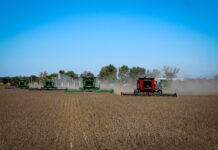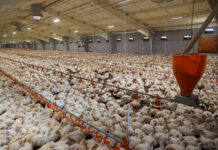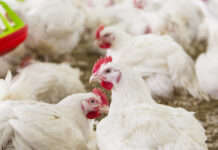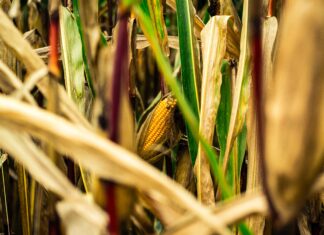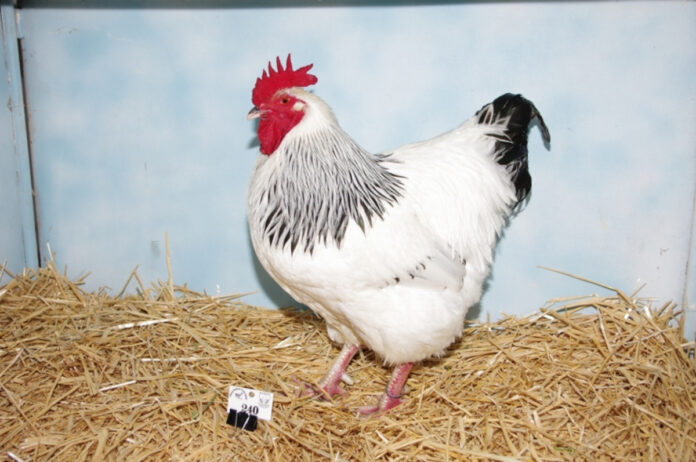
South Africa’s poultry industry is back onto a growth path driven mainly by the affordable feed prices and a resilient farming community that has partnered with the government to invest more in the expansion of both the domestic and international market for chicken and eggs.
The country, which is recovering from the 2023 highly pathogenic avian influenza (HPAI) outbreak that led to the culling of an estimated 10 million birds, is expected to record a growth of two percent in chicken meat production to 1.68 million tons in 2026 as the country rides on decline in feed prices to grow the market according to a recent report by the US Department of Agriculture (USDA).
The report indicates the growth projections for 2026 are higher thab the estimated 1.65 million tons and 1.58 million tons for 2025 and 2024 respectively.
This increase, the USDA report says, is largely driven by “lower feed costs and industry recovery from Highly Pathogenic Avian Influenza (HPAI).”
The 2023 HPAI outbreak decimated poultry flocks leaving many farmers struggling to recover financially with some closing their businesses permanently according to the South Africa Poultry Association (SAPA) Board Chairman Aziz Sulliman.
However, he said by mid-2024, “the national bird numbers and production levels were more or less back to normal.”
This recovery in poultry numbers for 2024 saw South Africa’s combined farm income for poultry meat and eggs increase to ZAR 87.95 billion (EUR 43.65 billion) up from ZAR 79.60 billion (EUR 39.50 billion) in 2023, a growth equivalent of 10.5%.
According to SAPA, since May 2023, feed prices had been on the decline even as broiler prices continued to show positive growth year-on-year, a big contrast with the December 2022 when the prices were 30.6% more compared to similar month in 2021.
The Association attributes the decline to an increase in production of poultry feed raw materials especially maize, which makes up up to 70% of the broiler diet, and soybean.
For instance, South Africa’s Department of Agriculture says the country’s soybean production has increased to 2.7million tons and with the current adequate crushing capacity, “South Africa is self-sufficient in soybean meal and prices are trading at a significant discount compared to import parity prices.”
“The better animal feed prices are also in a year when the feed production volume is recovering and the better feed volumes and prices will benefit the poultry and the pork producers, who are also not facing as challenging an environment as the cattle and dairy producers,” the department says in its Q2, 2025 report.
Meanwhile, the country’s Animal Feed Manufacturers Association (AFMA) says in 2024, South Africa’s total poultry feed consumption increased by 4.1% with the Association members’ feed sales between April 2023 and March 2024 for breeders and broilers amounting to 3.534 million tons, which includes 202,740 tons manufactured in other countries of the Southern African Development Community (SADC), a regional organization of 16 Southern African states that promotes economic development, political stability, and social progress through regional integration and cooperation.
According to SAPA, since May 2023 feed prices had been on the decline even as broiler prices continued to show positive growth year-on-year, a big contrast with the December 2022 when the prices were 30.6% more compared to similar month in 2021. The average price for layers feed in 2024 decreased by 6.4% to ZAR5 625/ton (EUR 274.1/ton) a reversal of the 5.2% increase the previous year.
SAPA has attributed the decline in poultry feed prices to an increase in production of poultry feed raw materials of maize, which makes up up to 70% of the broiler diet, and soybean.
The surge in South Africa’s poultry production for 2024, partly explains the decline in imports from 347,000 metric tons to 325,000 metric tons with projections showing the dip in imports could reach 308,000 metric tons in 2026.
Similarly, poultry exports surged from 58,000 metric tons in 2024 to 60,000 metric tons in 2025 with forecasts showing a further increase to 65,000 metric tons in 2026.
Meanwhile, South Africa recorded an increase in investments in poultry production facilities of ZAR 2.1 billion (EUR 104.2 million) between 2019 and 2023 which led to the establishment of 20 new contract growers, adding 19 million broilers to annual national production and creating 1,638 jobs according to USDA.
As 2025 comes to a close, the poultry industry, which provides 33.4% of animal protein in South Africa, and also holds the largest share in the country’s agriculture sector at 19.1% of all the country’s agricultural production, is likely to continue growing despite existential threat of HPAI and ongoing controversy not only on the vaccination process but also on compensation of farmers who have lost their flock in previous outbreaks of the deadly disease.


